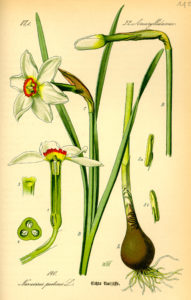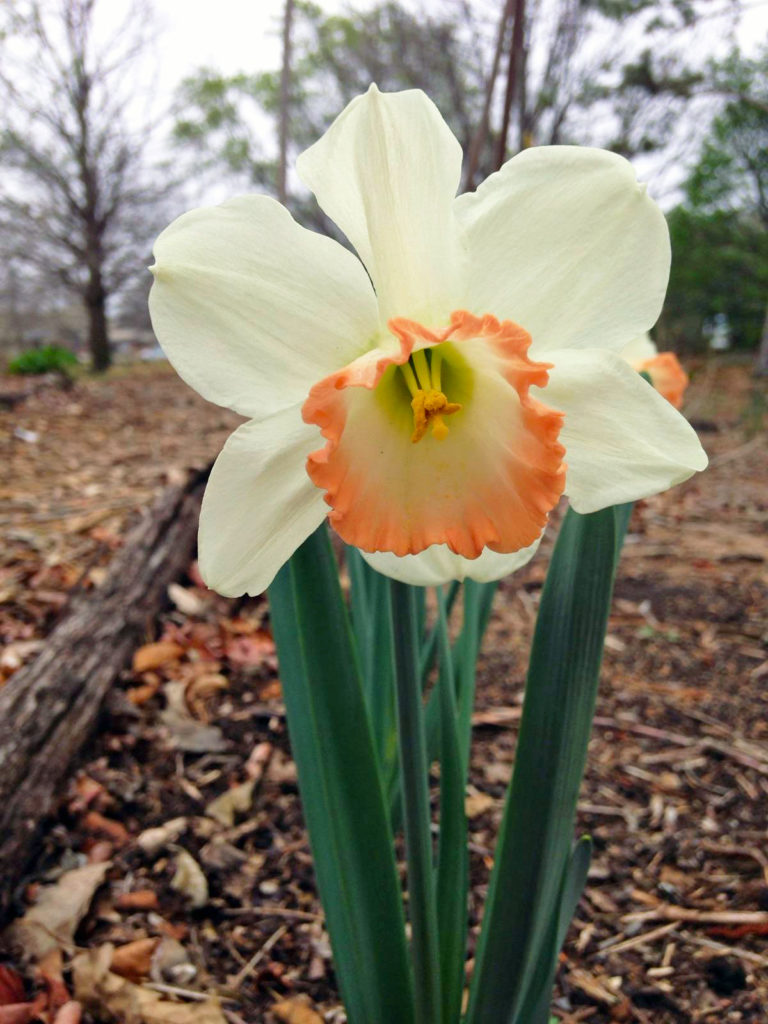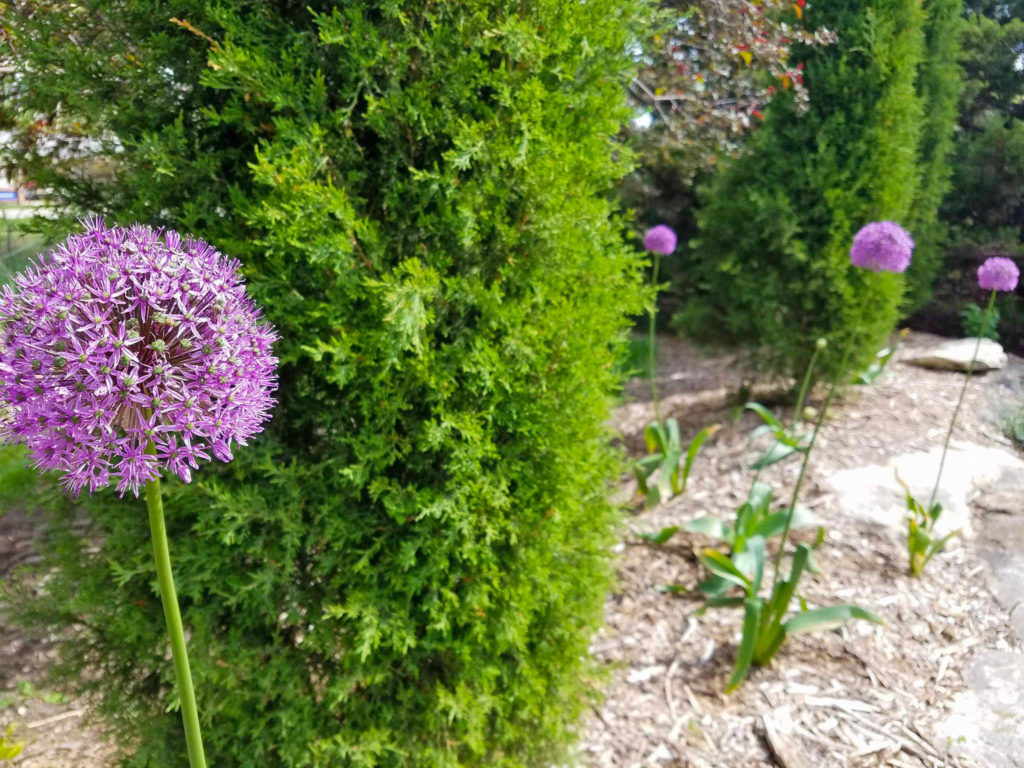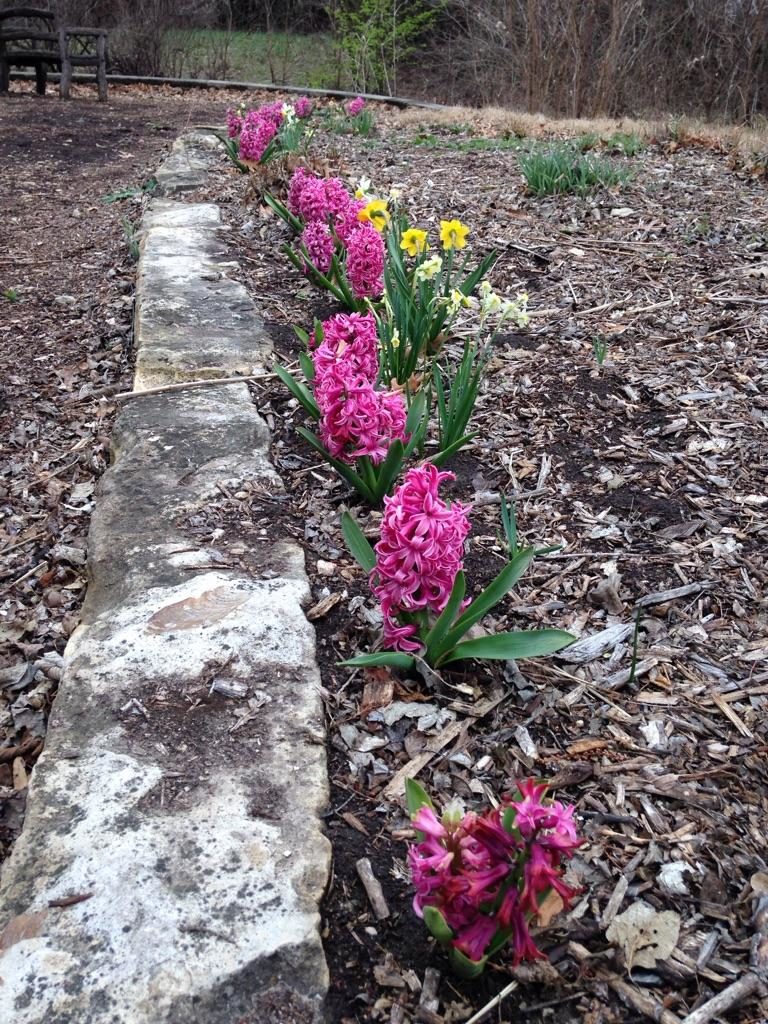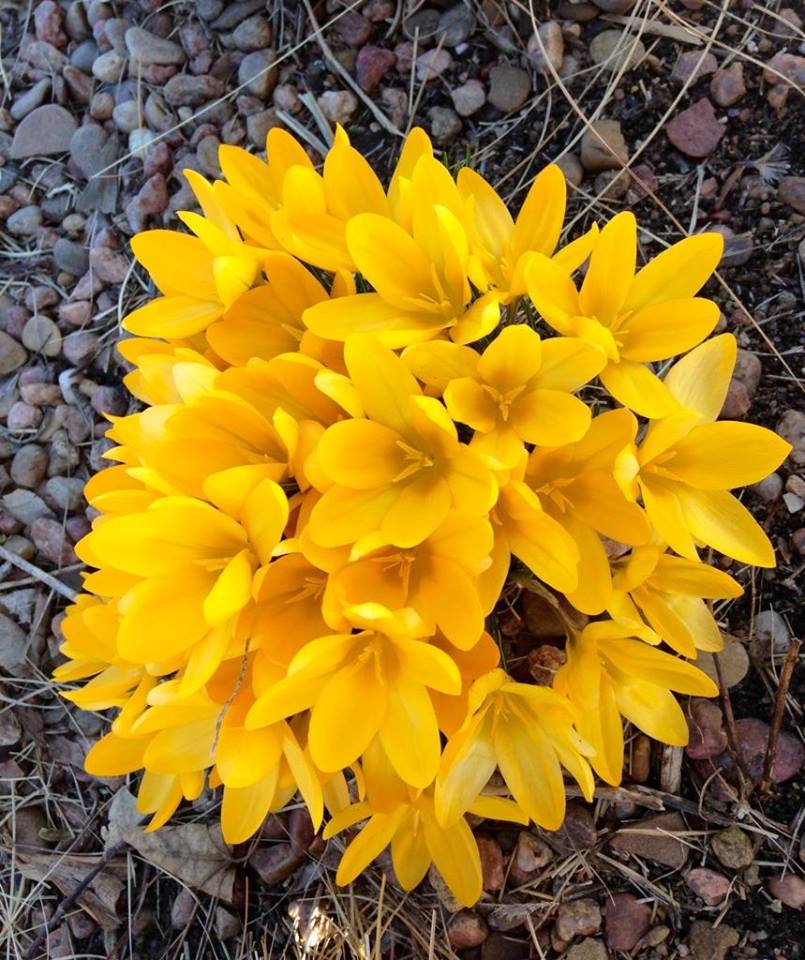My volunteers and I have been spending many hours this fall planting daffodils and tulips around the Arboretum grounds. All told, we will have nearly 800 new blooming bulbs coming up next spring, down a bit from the 1000 we planted last year.
One afternoon my colleague Brad Guhr posed an important question:
“Are bulbs useful to spring pollinators?”
We all love the aesthetics of fat yellow daffodils and spritely crocus, but I had never considered whether they served an ecological purpose. Supposing (incorrectly) that most bulbs I order are native to the Netherlands, what good would they be to our local pollinator population?
I have now been down the rabbit hole of research and will summarize here how bulbs affect pollinators, which bulbs attract them and proper bulb planting technique.

Tulip humilis (aucheriana) is a wild-type tulip that does well in gardens and meadows alike.
By Bernd Haynold – selbst fotografiert – own picture, CC BY-SA 3.0, https://commons.wikimedia.org/w/index.php?curid=4767022
Bulbs and Bugs
Long before people started admiring their blooms, most of our favorite bulb flowers were being visited by pollinators. Such is not the case for today: modern hybrids selected for the biggest bloom and brightest color sometimes become less useful to pollinators. Flowers that have been distorted too far from their original form may have less nectar or be entirely sterile, rendering them useless as a food source. Hybridization can also sacrifice the flower’s strong scent, leaving aroma-sensing pollinators (like nocturnal moths) lost without lunch. As humans try to improve flowers for our own eye, we inadvertently disrupt their role in nature. Insects and flowers have an important relationship directly related to the flower’s form. If it changes drastically, certain insects may no longer be able to reach the nectar. Because of this, avoid buying highly modified ‘double’ and ‘triple’ bloomers or extra-petaled flowers that will likely inhibit a pollinator’s ability to feed.
Best Bulbs
Though we may associate the bulb trade with Holland, the native range of daffodils is the Iberian Peninsula and tulips grow wild in Turkey and Central Asia. Crocus were originally native to southern Europe, the Middle East and western China. There are some bulbs native to North America, such as Claytonia virginica and Mertensia virginica as well as the trout lily, but they are too often upstaged by fancy exotics. This link offers great options for North American native bulbs that will benefit you and the ecosystem. If you aren’t ready to give up your tulips and daffodils, never fear! By choosing unhybridized species, the flower retains its pollen and nectar, supplying much needed early spring feeding for hungry pollinators. Crocus, species-variety Tulips and Muscari all are well-loved by hungry bees waking up from their long hibernation as well as wild type daffodils such as Narcissus poeticus or N. jonquilla.

A bee visiting a purple crocus flower.
CC BY-SA 2.5, https://commons.wikimedia.org/w/index.php?curid=660234

Claytonia is a lovely North American native. By Dcrjsr (Own work) [CC BY 3.0 (http://creativecommons.org/licenses/by/3.0)], via Wikimedia Commons
Planting Tips
The first step to proper planting is identification – is what you are holding truly a bulb? Corms, tubers, rhizomes and true bulbs all fall under the category “geophyte” (a perennial that stores its food underground). Many rhizomes would not like to be buried as deep as a bulb but corms can be treated much the same. Sorting out the technicalities will ensure correct planting and big blooms!
When planting true bulbs, depth is essential. In general, plant bulbs 2 or 3 times as deep as its height. Example: a 2 inch tall daffodil bulb should be planted 6 inches deep. Digging too shallow is better than planting too deep since many bulbs have contractile roots. Over time, these specialized roots will pull it down to optimal depth. Planting root side down/pointed side up is always best, but if the bulbs are too odd-shaped to tell, plant them sideways to be safe. Thanks to geotropism, a plant’s ability to sense gravity and grow accordingly, they will eventually right themselves.

Bees love Fritillaria meleagris, a dainty and unique bulb native to Europe. By Пономарьова Алевтина (Own work) [CC BY-SA 4.0 (https://creativecommons.org/licenses/by-sa/4.0)], via Wikimedia Commons

